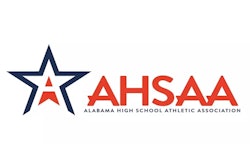A majority of athletic directors at Power 5 schools are in favor of a major restructuring of NCAA sports, according to new data released by the Knight Commission for Intercollegiate Athletics.
The online survey, which was filled out by 362 university presidents, athletic directors, conference commissioners and others, showed a willingness to restructure Division I’s levels, including separating FBS football from the NCAA.
Nearly 80 percent of respondents said that it is essential to keep all current Division I schools in the same men’s basketball tournament.
The 15-minute online survey, which was conducted June 18 through July 14 by Shugoll Research, revealed “widespread dissatisfaction” with current Division I governance and concern about financial disparities.
"It's clear from our survey that college leaders acknowledge that the status quo is no longer acceptable," said Knight Commission co-chair Carol Cartwright, president emeritus at Kent State University and Bowling Green State University, in a prepared statement, according to ESPN. "This survey demonstrates that broad support for a new model for Division I is even more pressing after the pandemic, as college athletics leaders realize their business models must change — and radically."
The vast majority of NCAA Division I campus and sports leaders believe that college sports reform should be focused on “big solutions,” a new survey from the Knight Commission on Intercollegiate Athletics shows. The groundbreaking survey reveals far-ranging dissatisfaction with current Division I governance.
The survey found that nearly 80 percent of respondents agreed with the statement that “Division I reform should look for ‘big solutions’ rather than incremental changes.”
“The Division I model has needed an overhaul for many years now, and our survey shows that most college sports leaders recognize the need for fundamental change in the structure and governance of college sports,” said the Commission’s co-chair, Arne Duncan, former U.S. Secretary of Education. “The work ahead is much broader than adopting a few new policies.”
Survey respondents included Division I officials responsible for the governance of intercollegiate athletics: college presidents, conference commissioners, athletics directors, college athlete leaders, and institutionally-designated faculty athletics representatives and senior woman administrators.
Reforms sought by leaders differ among NCAA Division I’s three subdivisions — the Football Bowl Subdivision; Football Championships Subdivision; and Division I schools without football. Additionally, the survey analyzes FBS respondents by their affiliation in the Power 5, made up of the five richest conferences that control the College Football Playoff, and the Group of Five, which includes the other five FBS conferences.
A September 2020 Knight Commission public forum on Division I finances detailed the vast difference in financial resources among the division’s 351 institutions. Last year, for example, Division I athletic department budgets ranged from $4 million to more than $200 million, with the vast majority of schools relying on institutional funding and student fees to subsidize their athletics programs.
The survey found surprisingly widespread support for sweeping actions to contain athletic spending, such as:
- An antitrust exemption to control athletics costs (67 percent), with more than 80 percent of the Power 5 respondents supporting such an approach.
- Conference-level agreements to cap sports’ operating budgets, including coaching salaries (62 percent).
- Three in four of all Division I presidential respondents supporting both of the above measures.
The survey also found dissatisfaction with the current model of governance for NCAA Division I sports. Fewer than one-third of all respondents indicate satisfaction with governance, including 30 percent or less of key decision-makers (presidents, athletics directors, and commissioners).
Nearly 80 percent of respondents believe that some members of the NCAA governing board should be selected to explicitly represent the health, safety and well-being of college athletes. Notably, these responses were expressed before the splintered decision-making in August that led some FBS conferences to cancel their fall football seasons in the wake of the coronavirus pandemic, while others decided to play with differing protocols.
Revenue Distribution (NCAA and College Football Playoff)
Division I institutions collectively receive more than $1 billion in revenues annually from the NCAA and College Football Playoff distributions. [Watch the Knight Commission’s virtual session explaining revenue distribution and access materials shared in that session here.]
College leaders expressed clear dissatisfaction with the ways in which both the NCAA and CFP distributions are shared:
- Only 25 percent of respondents think full absorption of FBS football expenses by the NCAA is appropriate since the NCAA does not receive any revenues from FBS football or the CFP.
- Fewer than one in four respondents are satisfied with the NCAA’s current revenue distribution formula, and both presidents (24 percent) and athletics directors (25 percent) share that critical appraisal.
- By contrast, nearly 70 percent of the Power 5 respondents are satisfied with revenue distribution from the CFP. But satisfaction drops precipitously from there, with almost half of the Group of Five respondents expressing dissatisfaction with CFP revenue distribution and 60 percent of all respondents dissatisfied with the current CFP distribution.
Alternative Models
The survey asked about several major reorganizations of the current Division I model by presenting the following alternatives:
- Completely separating FBS football from the NCAA into a distinct entity, with all other sports remaining in the NCAA Division I as presently organized.
- Creating a new NCAA Division for Power 5 conferences.
- Allowing for new geographically based competitive affiliations by sport instead of the current multisport conference structure.
All potential reorganizations maintained the current Division I basketball tournament format, which as noted earlier has overwhelming support with 77 percent of all respondents agreeing with the statement that it is “essential” to keep this element.
The survey found an openness to alternative structures. However, the support differs significantly by competitive classification.
More specifically:
- Almost two-thirds (65 percent) of respondents from Division I institutions without football were in favor of separating FBS football from the NCAA and creating a new entity to solely manage that sport. However, 42 percent of FBS respondents oppose such a change.
- Roughly 60 percent of Power 5 respondents were very or somewhat likely to support the creation of a separate new division within the NCAA for the Power 5 conferences to compete in sports other than men’s and women’s basketball. By contrast, nearly 60 percent of respondents from non-Power 5 institutions (i.e., Group of 5, the Football Championship Subdivision, and D-I No Football) oppose creating a fourth NCAA division.
- Just over 60 percent of all respondents support competitive structures that would allow for sport-specific geographic federations, other than basketball, instead of the current multisport conference approach in order to reduce costs.





































